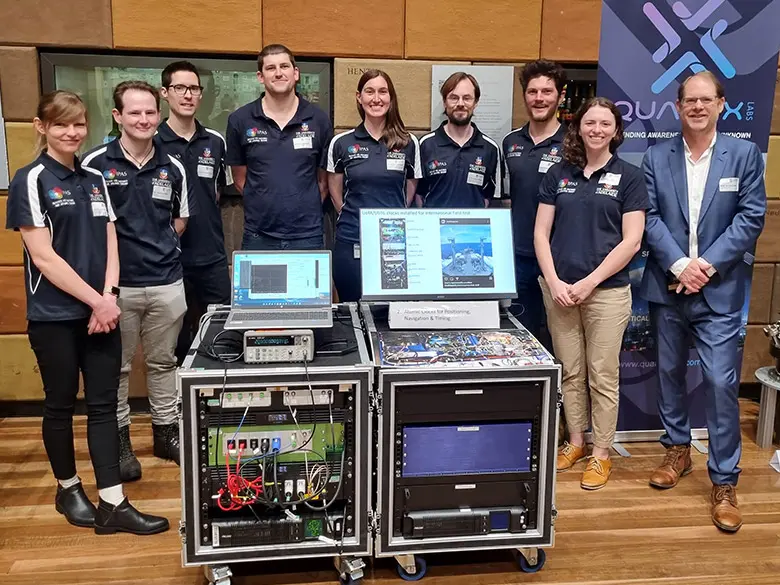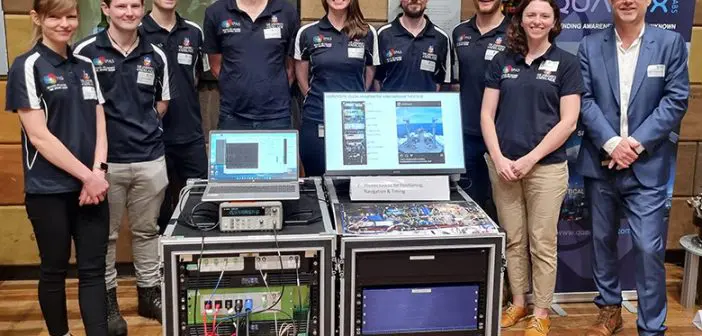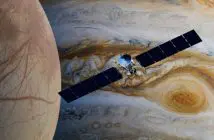
Optical quantum clocks developed at the University of Adelaide have been proven to out-perfom GPS navigation systems by many orders of magnitude.
The clocks, which were put through their paces in naval exercises, were developed by a team led by the University of Adelaide’s Professor Andre Luiten, Chief Innovator and Chair of Experimental Physics at the Institute of Photonics and Advanced Sensing (IPAS), in partnership with colleagues at the Defence Science and Technology Group (DSTG).
“Assured timing is critical for communications and positioning applications, especially at a time when sovereign defence capability is of increasing importance,” Professor Luiten said.
“Timing signals are currently provided by the Global Positioning System (GPS), however in contested environments, where GPS may be jammed or spoofed, time synchronisation between locations would rapidly deteriorate.
“A solution to this issue for the Australian Defence Force (ADF) is a sovereign-developed, rugged and portable clock, which could be deployed in the field.”
Tested during naval exercises in Hawaii, the clocks were designed to be robust enough to withstand being rocked by waves while they are on ships.
The two separate portable quantum clock technologies were developed jointly by University of Adelaide and DSTG, with an investment by DSTG.
“The cutting-edge generation of clocks developed by the IPAS and DSTG team are between 20 and 200 times more precise over a second of measurement time than the present international standard,” said Dr Ashby Hilton, Research Physicist from the IPAS team.
“Both clocks are optical atomic clocks, using the elements rubidium and ytterbium to provide incredibly pure timing signals which enables superior performance to GPS clocks,”
“Previous versions of clocks that operate at this level of accuracy are not portable as they require large amounts of lab space and are too sensitivity to motion and changes in temperature.”
The clocks designed by the team rely on sealed cells containing a low-pressure gas of atoms. These cells are then interrogated with lasers at specific colours, and the information extracted is used to steer the laser wavelength to the atom – providing stability.
The clocks were deployed, along with other quantum sensing and timing technologies at the Rim of the Pacific (RIMPAC) naval exercises in July 2022, off Hawaii, as part of an alternative position, navigation and timing challenge that pitted them against technology developed by other countries. The full results from the field tests have now been published by the team of experts in the journal Nature Communications.
“RIMPAC was the first time that an ensemble of optical atomic clocks were demonstrated at sea, a significant milestone for assured timing and navigation,” said Ashby.
“The best quantum technologies from around the globe were installed within a shipping container during this exercise and spent more than three weeks on manoeuvres.
“The University of Adelaide’s clocks were at the top of the performance chain of all clocks included in the exercise.”
While the clocks have been designed for this very specific application, future variants could have other uses like next-generation GPS satellite constellations or accurate record keeping in high frequency financial trading.
The University has partnered with Quantx Labs, a local quantum technologies company, with the goal of transferring the IP and know-how out of the research space and into industry.
The University of Adelaide and the University of South Australia are joining forces to become Australia’s new major university – Adelaide University. Building on the strengths, legacies and resources of two leading universities, Adelaide University will deliver globally relevant research at scale, innovative, industry-informed teaching and an outstanding student experience. Adelaide University will open its doors in January 2026. Find out more on the Adelaide University website.
Image: The IPAS team with the quantum clocks.





